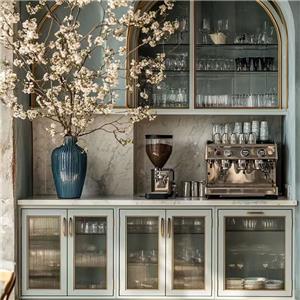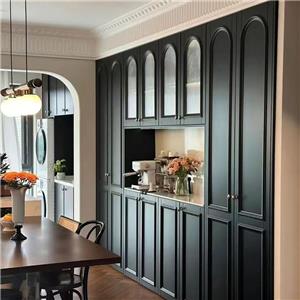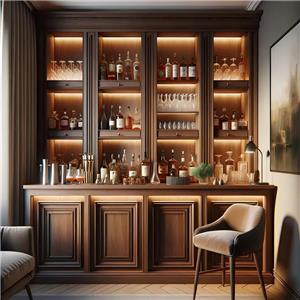Should built-in fitted wardrobes be equipped with back panels?
With the continuous pursuit of spatial functionality in modern home design, built-in fitted wardrobes have become the preferred choice for many families when decorating. Unlike traditional free-standing cabinets, built-in fitted wardrobes are usually installed in the wall, maximizing the use of space while giving the room a simple visual effect. However, there is a detail problem in the design of built-in fitted wardrobes that is often overlooked - the installation of the back panel.
As an important part of wardrobe design, the presence or absence of the back panel may directly affect the stability, convenience of use and aesthetics of the wardrobe. When installing built-in fitted wardrobes, should a back panel be added? Will it affect the transparency of the space, or can it enhance the structural stability of the wardrobe? This article will analyze the pros and cons of installing back panels on built-in fitted wardrobes from different angles to help readers make appropriate decisions.
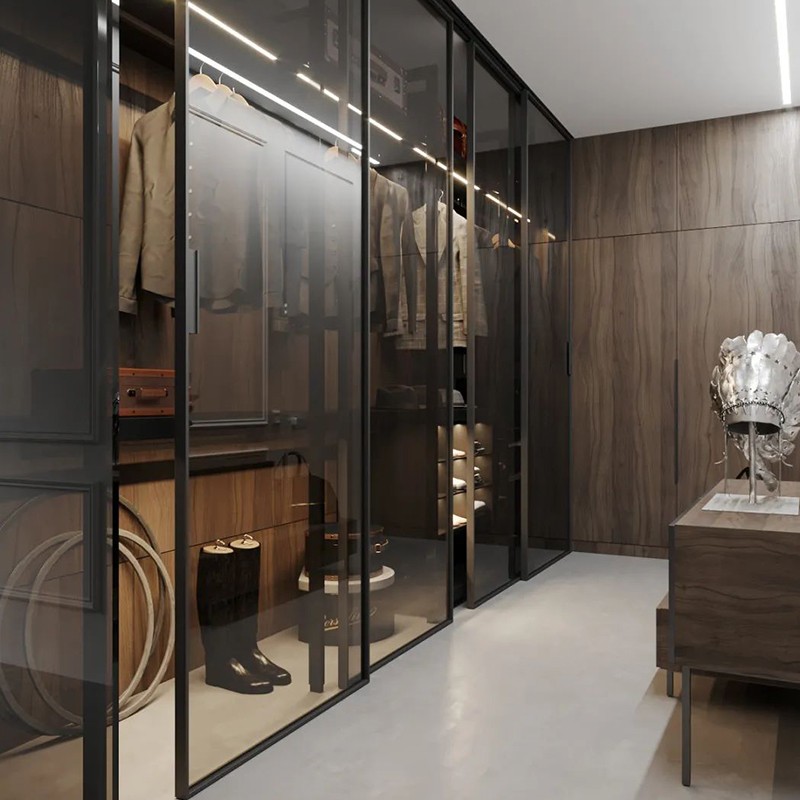
What is the role of the back panel of built-in fitted wardrobes?
Before discussing whether to install a back panel, we first need to understand the function and role of the back panel in wardrobe design.
1.1 Enhance structural stability
The back panel is one of the important structural parts of the wardrobe, which can enhance the stability of the wardrobe. Especially for built-in fitted wardrobes, since most of them are fixed to the wall or the structural frame of the room, the backboard, as the supporting part of the load-bearing object, can effectively increase the shock resistance and firmness of the wardrobe. Wardrobes without backboards, especially without sufficient support, are prone to deformation, looseness or even tilting.
1.2 Aesthetics and neatness
The backboard also plays an aesthetic role. For built-in fitted wardrobes, the wall as the background and the backboard of the wardrobe may appear relatively rigid. Without the backboard, the interior of the wardrobe will be exposed to the wall or other building structure, which can easily give people a messy feeling. The addition of the backboard can not only make the entire wardrobe look more neat and unified, but also enhance the overall design sense, and prevent the clothes from directly contacting the wall and causing friction or pollution.
1.3 Prevent pests and dust
In some humid areas, the wall may breed some moisture or pests, especially if the wall is not well insulated or moisture-proof. In this case, the backboard can provide additional protection for the wardrobe to prevent moisture and pests from entering the interior of the wardrobe, ensuring the cleanliness and preservation of the clothes. A wardrobe without a back panel may not be able to provide such protection.
1.4 Hiding wires and pipes
In some cases, there may be wires, pipes or other hidden structural facilities in the wall. After installing a back panel, these pipes or wires that may be exposed will be completely hidden, avoiding contact between clothes and these facilities. At the same time, the back panel can also prevent clothes from coming into contact with dirty or unsightly parts of the wall, thereby keeping the interior of the wardrobe tidy.
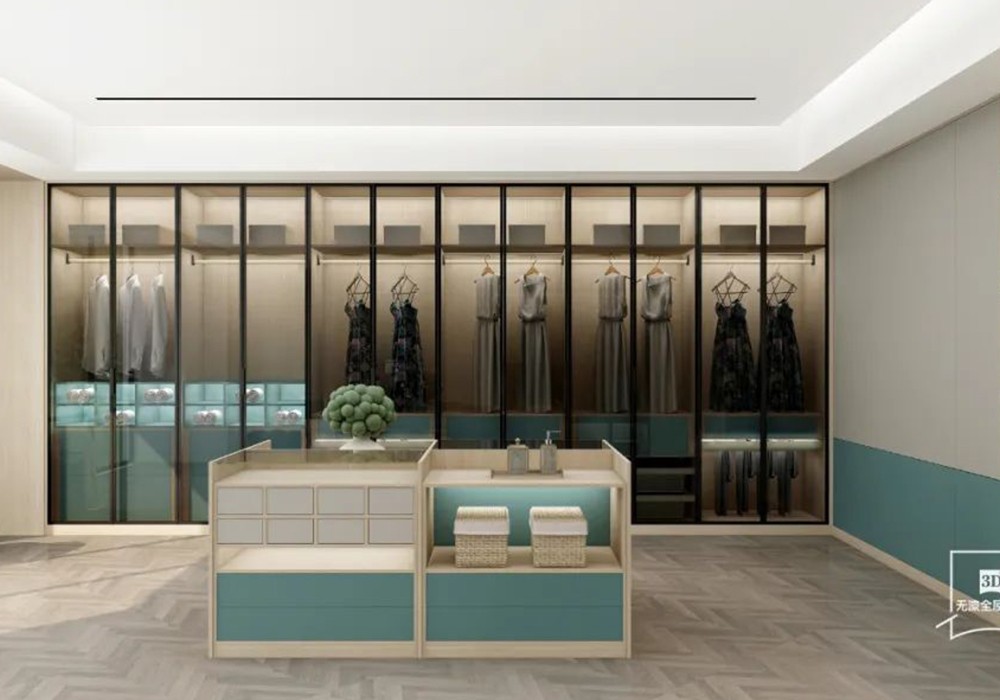
Advantages and disadvantages of built in fitted wardrobes without back panels
In some specific designs, it is also a common practice for built in fitted wardrobes to choose not to install back panels. Wardrobe designs without back panels often appear more simple and transparent, and can also bring some design flexibility. So, what are the advantages and disadvantages of not installing back panels?
2.1 Advantages: The visual effect is simpler and more transparent
Wardrobes without back panels usually give people a simple and open feeling, especially in modern simple or minimalist style decoration, this design can enhance the transparency of the space. There is no obvious separation line between the wardrobe and the wall, making the space more integrated and giving people a fresh and natural feeling. If the room is small, the design of built in fitted wardrobes without backboards can also increase the visual sense of openness of the room, and will not appear cramped due to the presence of backboards.
2.2 Advantages: Saving costs and construction period
Built in fitted wardrobes without backboards may be simpler in production and installation, thus saving material and labor costs. In addition, since the backboard does not need to be made or installed separately, this can also shorten the construction period, which is a more economical choice for those families who are in urgent need of moving in or decorating.
2.3 Disadvantages: Possible structural instability
Wardrobes without backboards may be structurally unstable during use due to the lack of additional support. Especially for the parts that need to bear weight, such as drawers or shelves, the design without backboards may not provide sufficient support, causing the cabinet to be easily deformed or tilted.
In addition, in some larger wardrobes, the lack of backboards may affect the overall strength of the cabinet, and it is easy to loosen or damage after long-term use.
2.4 Disadvantages: Walls are easily exposed
Wardrobe designs without back panels may result in the wall being directly exposed, especially if the wall is not flat or the color is messy, which may affect the overall visual effect. Wall defects, seams and even fading paint may be visible at a glance. If there are cracks or problems in the wall, the items inside the wardrobe are also easily affected, causing problems with the cleaning of clothes.
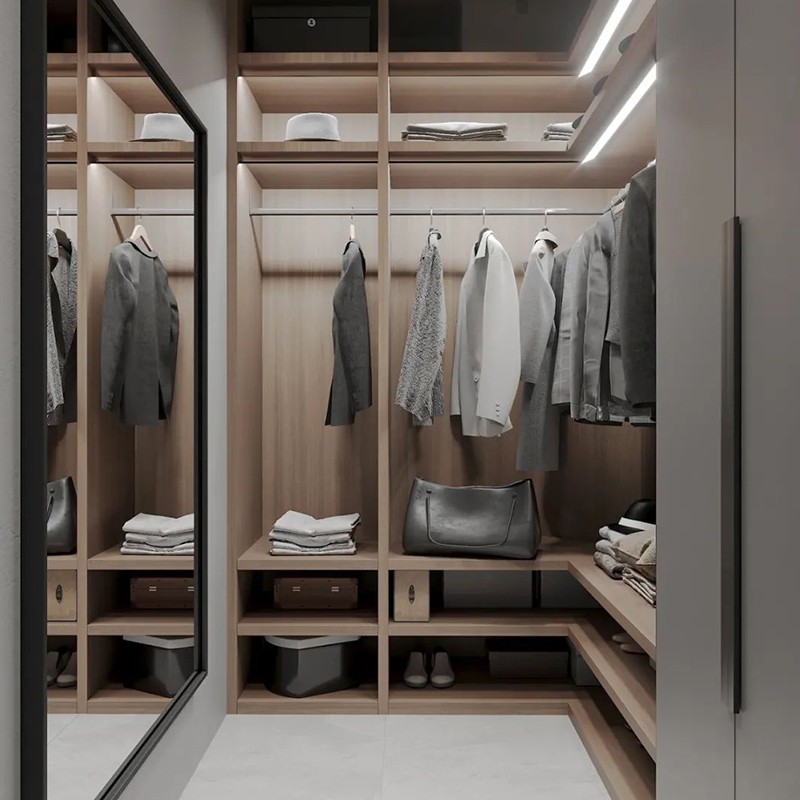
When should built in fitted wardrobes choose to install back panels?
Although wardrobes without back panels can provide a larger sense of space, in some cases, installing back panels is more in line with practical needs and can bring more advantages in use.
3.1 When higher stability is required
If you plan to store a lot of items in the wardrobe, especially heavy items (such as heavy coats or books), or the wardrobe has a lot of drawers and hanging rods, then installing a back panel will help enhance the stability of the wardrobe and ensure that the structure of the wardrobe will not deform due to weight.
In addition, if the wardrobe is designed to be large or needs to be opened and closed frequently, the installation of a back panel can effectively improve the overall stability of the wardrobe and avoid shaking or imbalance due to repeated use.
3.2 When the wall is uneven
If the wall where you install the wardrobe is relatively uneven, installing a backboard can effectively cover up the wall defects. Whether it is the joints and cracks of the wall or the defects caused by water pipes, wires and other facilities, the backboard can perfectly cover them to prevent these problems from affecting the beauty of the wardrobe.
3.3 When it is necessary to enhance the moisture-proof and insect-proof function
If your wardrobe is located in an area with high humidity, such as near a bathroom or window, the installation of a backboard can effectively prevent moisture from the wall from entering the wardrobe and play a moisture-proof role. Especially in a humid environment, mold or insect pests may grow on the wall. The design of the backboard can effectively block these problems and protect clothes from damage.
3.4 When you want to improve the sense of neatness and beauty
In some high-end, detail-oriented home designs, the installation of a backboard can enhance the overall beauty and neatness of the wardrobe. Especially in modern or neoclassical styles, the presence of a backboard can not only ensure that the clothes in the wardrobe do not directly touch the wall, but also enhance the overall visual effect. Whether in classic wood, lacquered panels or decorative materials such as marble, back panels can add a sense of luxury and sophistication to your wardrobe.
How to choose the right back panel material for built in fitted wardrobes?
If you decide to install back panels on your built in fitted wardrobes, then choosing the right back panel material is crucial. The material of the back panel directly affects the overall beauty and functionality of the wardrobe. Common back panel materials are:
● Particleboard or medium density fiberboard (MDF): This material is economical and widely used in various wardrobe designs. Its surface can be painted, filmed or veneered to suit a variety of styles.
● Wood grain panel: This material provides a more natural texture and is suitable for wardrobe designs that focus on natural style or country style.
● Painted board: Painted back panels have a smooth surface and high gloss effect, which is suitable for modern minimalist or high-end customized wardrobe designs.
● Metal back panels: Metal back panels are often used in industrial style or modern designs to provide a strong and visually striking effect.
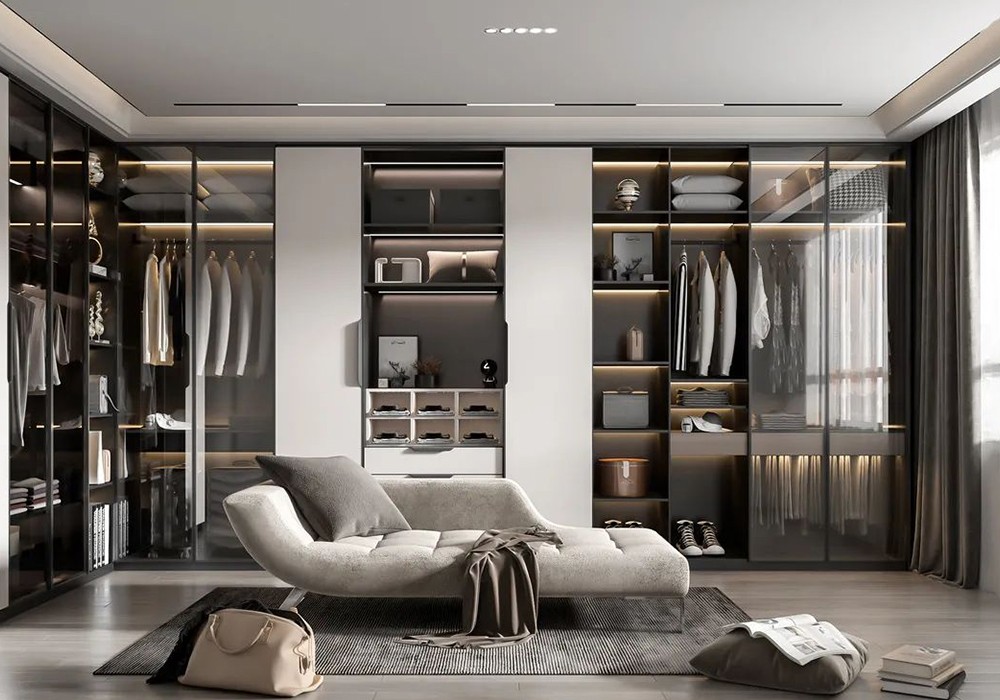
As a leading supplier of custom cabinetry, Gagaluna has been delivering high-quality, tailor-made furniture for over 18 years. Our products include kitchen cabinets, wardrobes, bar cabinets, bookshelves, and more, crafted from a variety of materials like stainless steel, glass, and acrylic. We offer competitive prices, wholesale pricing, and discounts to ensure that you get the best deal. Whether you’re purchasing in bulk or looking for a unique, customized design, Gagaluna guarantees high-quality results that match your style and budget.

